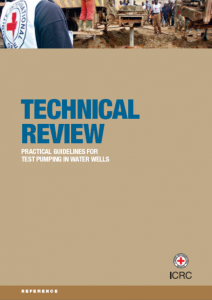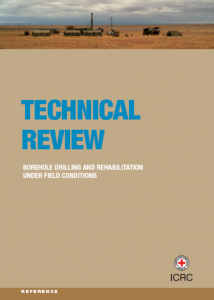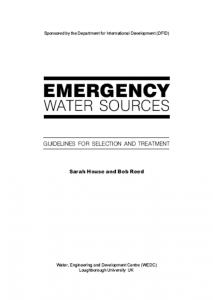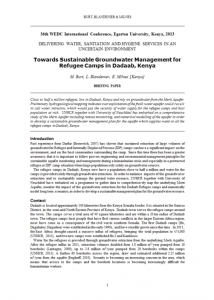
Pumping tests are a practical way of obtaining an idea of the borehole’s efficiency and its optimal production yield. Much of the specialized knowledge and technical expertise needed for this purpose can be gained from the standard literature. However, field operations in remote areas or in difficult conditions often require flexibility and imagination in avoiding or solving technical problems. These guidelines are intended mainly as a practical tool and
therefore contain a minimum of theory. They are aimed at water and habitat engineers working in the field who are undertaking or supervising borehole drilling or rehabilitation
programmes and are not conversant with pumping test procedures.

Constructing, or repairing, boreholes requires specialized knowledge and technical expertise, much of which can be gained from the standard literature; but field operations in remote areas or in difficult conditions often require flexibility and imagination in avoiding and solving technical problems. This review is intended as a decision-making tool to assist in making cost-effective choices between borehole drilling methods, and in deciding whether to drill new boreholes or rehabilitate existing sites.

These guidelines have been designed to help those involved in the assessment of emergency water sources to collect relevant information in a systematic way, to use this information to select a source or sources and to determine the appropriate level of treatment required to make the water suitable for drinking.
Tags: Boreholes, Bulk Water Treatment, Drilling, Groundwater, Hand Dug Wells, Handpumps, Household Water Treatment, Piped Water Networks, Rainwater Harvesting, Solar Pumping, Spring Protection, WASH Assessments, WASH Monitoring, WASH Programme Management, Water Prospection and Investigation, Water Pumping, Water Quality Testing and Surveillance, Water Safety Plans, Water Storage, Water Supply, and Water Tankering. Languages: English. Organisations: WEDC. Categories: WASH Emergency Guidelines and WASH Reference Documents.

Close to half a million refugees live in Dadaab, Kenya and rely on groundwater from the Merti Aquifer. Preliminary hydrogeological mapping indicates over exploitation of the fresh water aquifer could result in salt water intrusion, which would put the security of water supply for the refugee camps and host population at risk. UNHCR together with University of Neuchâtel has embarked on a comprehensive study of the Merti Aquifer including remote monitoring, and numerical modelling of the aquifer in order to develop a sustainable groundwater management plan for the aquifer which supplies water to all the refugee camps in Dadaab, Kenya.
 English
English




